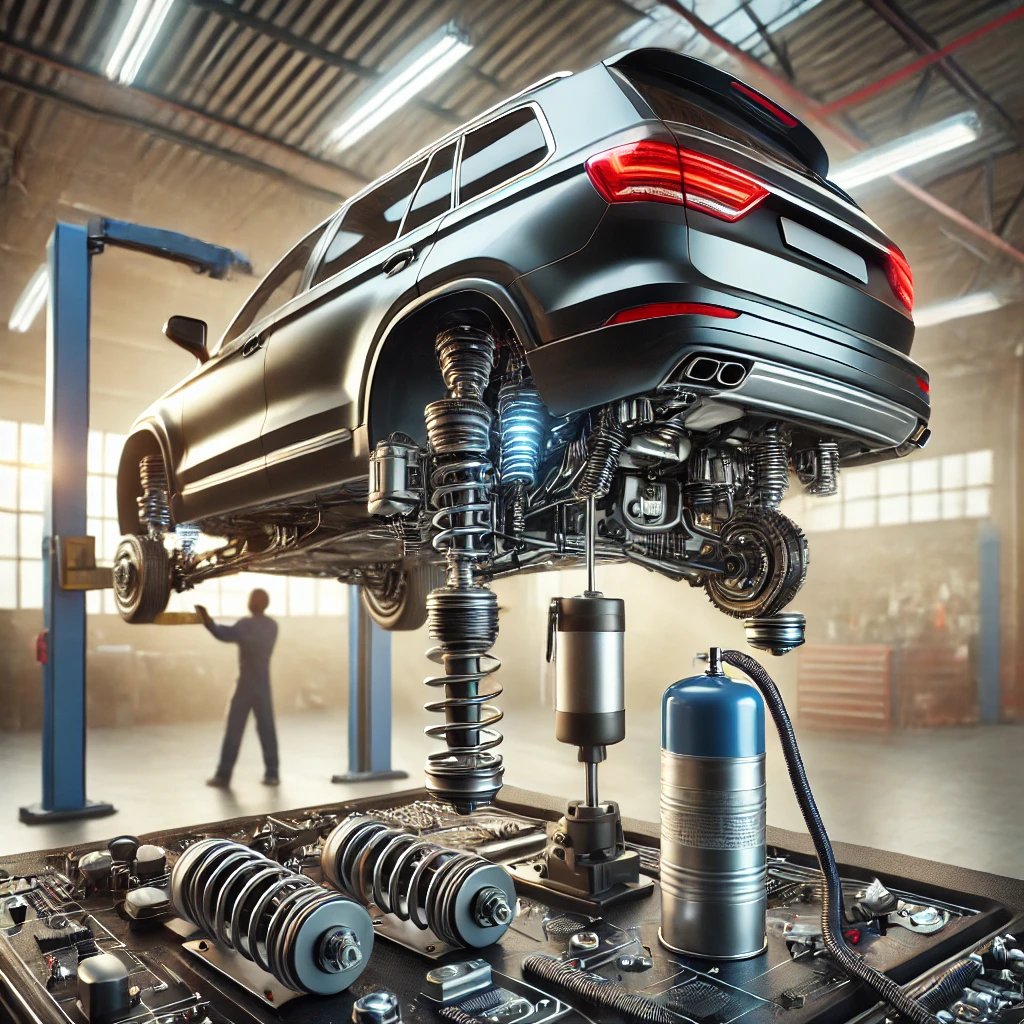of conventional steel springs. This article explains how air suspension and load leveling systems function to enhance vehicle performance.
What is Air Suspension?
Air suspension replaces a vehicle's conventional coil or leaf springs with air bags. These rubber bellows fill with compressed air to support the vehicle's weight. An air compressor, storage tank, and valve system manage the flow of air in and out of the bags.
Benefits of Air Suspension
Air suspension offers several advantages over traditional steel springs:
- Adjustable ride height: Air springs can raise or lower a vehicle with the push of a button
- Improved ride comfort: Compressed air absorbs bumps and vibrations better than metal springs
- Self-leveling: Air suspension automatically levels a vehicle under uneven loads
- Versatility: Drivers can adjust air suspension to optimize ride quality for different conditions
How Air Suspension Works
The air suspension system's compressor pumps air into the storage tank. Valves release air from the tank into the air bags as needed. Adding air stiffens the suspension and raises ride height. Releasing air softens the suspension and lowers the vehicle.
Height sensors at each wheel monitor the vehicle's position. The suspension control module makes constant adjustments to maintain the selected ride height. It adds or releases air as the vehicle's load changes to keep it level.
Load Leveling with Air Suspension
Load leveling is a key benefit of air suspension. It keeps the vehicle at a preset height regardless of cargo weight or passenger load. Without load leveling, a heavily loaded vehicle would sag in the rear, affecting handling and headlight aim.
The air suspension system detects changes in vehicle height using the sensors at each wheel. When the rear of the vehicle starts to sag under a heavy load, the control module opens the valves to send more air to the rear air bags. This firms up the rear suspension and brings the vehicle back to level.

Also see: Air Suspension Tanks: Revolutionizing Vehicle Customization
Air Spring Design
Air springs consist of a flexible rubber bellow sealed to a piston. The piston attaches to the vehicle's axle or suspension link. The bellow fills with air to provide spring force and damping.
Some air springs have an internal bumper to prevent harsh bottoming out over large bumps. Many also have a separate shock absorber to control spring oscillations. The air spring and shock absorber work together to optimize ride and handling.
Advantages for Towing and Hauling
Air suspension provides major benefits for vehicles that tow or haul heavy loads. Rear squat while towing can cause handling issues and uneven headlight aim. Hauling cargo in a pickup bed or trunk also compresses the rear springs.
With air suspension, the vehicle remains level under these uneven loads. This improves stability, braking, and headlight aim. The rear air springs automatically firm up to compensate for the extra weight. Drivers can also manually raise the suspension for more clearance over rough terrain.
Reliability and Maintenance
While air suspension has more components than conventional springs, modern systems are very reliable. If protected from debris, the rubber air springs can last over 100,000 miles. The compressor and valve block are durable and designed for the suspension's life.
However, any air suspension will eventually need repairs. Air springs can develop leaks, and compressors can fail over time. Fixing these issues promptly is essential to avoid further damage. Keeping the air springs clean and inspecting them regularly helps extend their service life.
Air Suspension and Load Leveling: Ensuring a Smooth Ride
Air suspension and load leveling provide a smooth ride and stabilize vehicles under heavy loads. By automatically adjusting spring force, these systems optimize comfort and handling in all conditions. While they require more maintenance than conventional springs, the benefits are significant for many drivers.
Whether towing, hauling, or just cruising down the highway, air suspension delivers a first-class ride. Its self-leveling feature is especially valuable for vehicles that frequently carry uneven loads. Air suspension is hard to beat for the ultimate in adjustability and ride quality.

